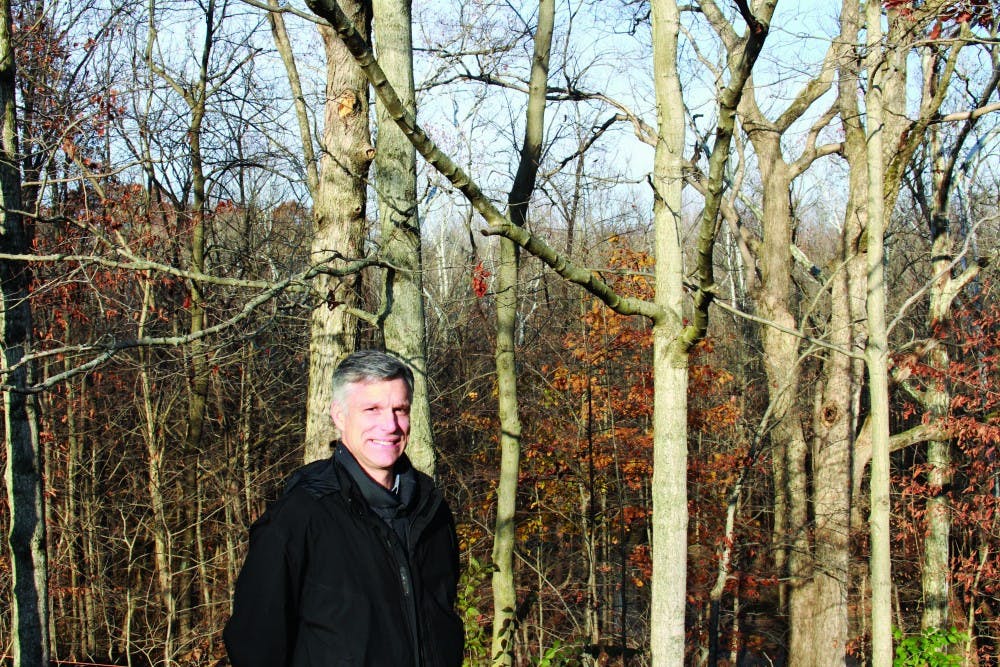By Becca Eis | Echo
Many Taylor students will say they appreciate the beauty of trees in the fall, but trees hold a special place in the heart of Ed Meadors, professor of biblical studies.
Meadors began his own tree farm in 2008 after acquiring 25 acres south of Upland. He initially became interested in this land from camping at a property nearby with family friends. When he found out the land previously owned by deceased community member Carl "Hoggy" Miller was up for auction, he, Department Chair and professor of computer science and engineering Art White, and former professor of physics and engineering Hank Voss Sr., purchased the land together and split the 80 acres among themselves.
"My passion was for the trees, for the forest, and when I discovered that we had some unforested land I looked into what it would take to plant a small scale tree farm," Meadors said.
Upon an internet search, Meadors quickly realized he could obtain 100 seedlings of different native species for a small price through the state if he registered the land as a certified forest. Since then, Meadors has built and moved into a house on his section of the land and has planted over 250 trees in his personal forest.
Meadors carefully selects each tree he plants based on its species and where it will thrive, taking access to shade, sun and water into consideration. Trees that can be seen in his forest include hickory, walnut and wild black cherry trees. His favorite, however, is the white oak.
"It's a special thing for me to see a white oak because it's just such a noble tree," Meadors said. "I mean, its wood is strong and resilient and holds up in the water. . . . There are a lot of biblical illusions, too. Isaiah calls the people of Judah 'oaks of righteousness.'"
Meadors treks through his forest at least once a week, enjoying the scenery and taking in God's creation. He also collects stones, which he uses to build walkways.
Meadors has also been known to invite students along on his weekly excursions, sharing his knowledge beyond the classroom walls and the constraints of curriculum.
"There are just countless illustrations you can use . . . relating to soil and stones and trees and animals and so forth that really work well in a teaching context," Meadors said "It is an interesting diversion from the content."
As for the future of his forest, Meadors is hesitant to harvest the trees, knowing the harvesting process will result in sacrificing the beauty of the landscape he's cultivated for so many years. But for now, he and his students will continue enjoying the view.



